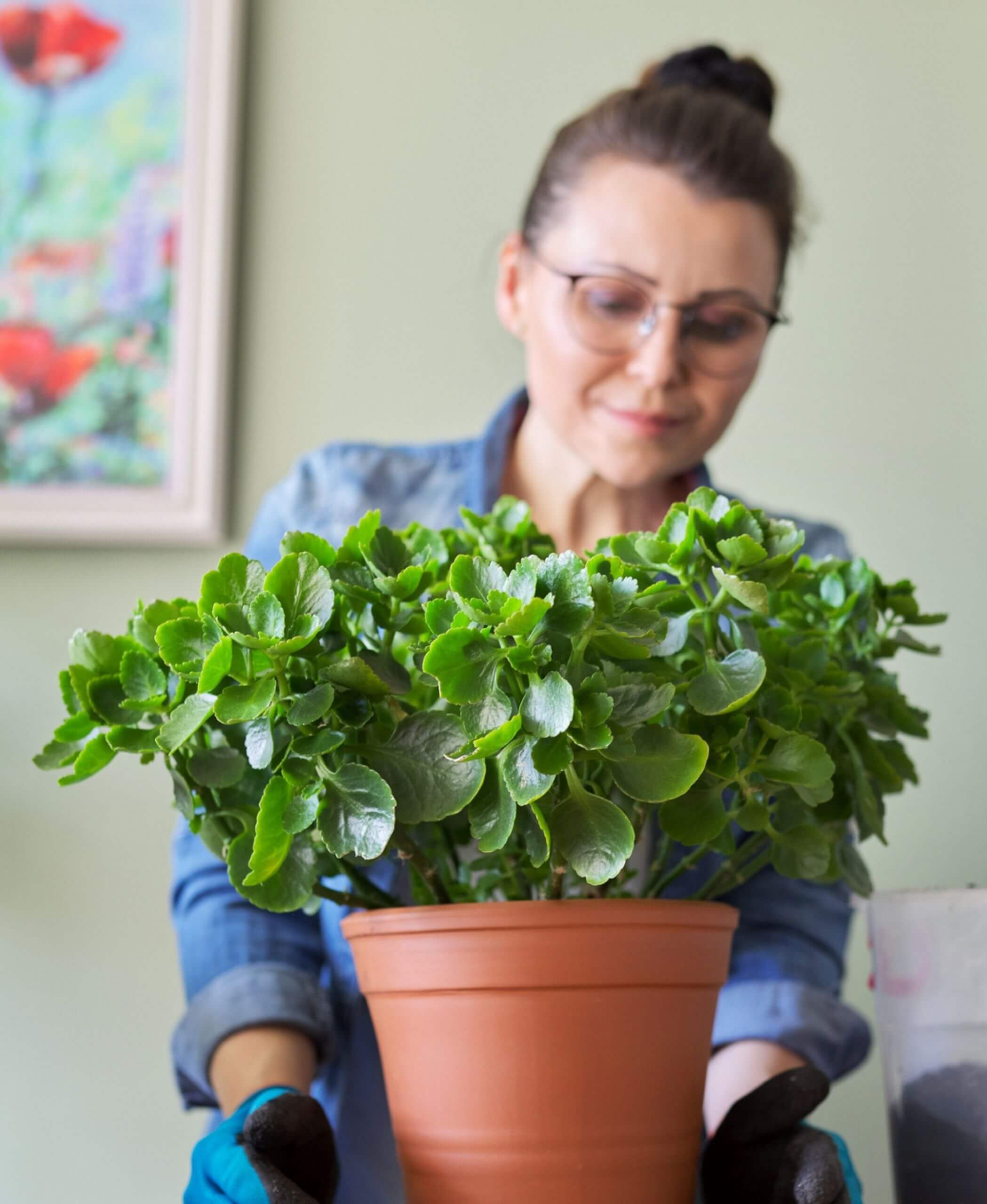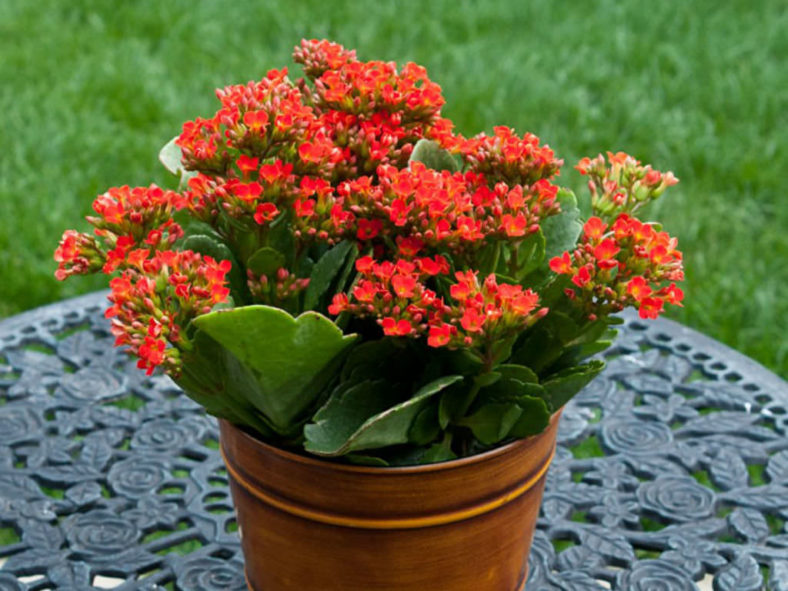Kalanchoes are popular succulent houseplants known for their lush foliage and colorful blooms Their vibrant flower clusters in shades of red, orange, yellow, pink, and white make them stand out in any indoor space But how often do these plants actually produce flowers?
Like some other succulents, kalanchoes bloom once a year for a few months—but to reap this colorful reward, you’ll need to take good care of your kalanchoe plants. Here’s what you need to know about how to grow and care for kalanchoe, according to plant experts.
The Kalanchoe’s Natural Bloom Cycle
In their native tropical regions, kalanchoes can bloom nearly year-round when conditions are right. But when grown as houseplants, they tend to flower during the late winter and spring.
The key factor influencing their bloom cycle is light exposure. Kalanchoes are short-day plants, meaning they will produce flowers when the days start getting shorter in the fall and winter. During this time, they require at least 12-14 hours of uninterrupted darkness each night to form flower buds.
Once daylight hours start increasing again in spring, the flower buds will begin to open. This results in a bloom period that typically lasts from late winter into spring—February through May in many cases.
So in their natural growth habit, kalanchoes will bloom once a year for a few months. But with some tricks, you can get them to flower more than once.
Encouraging More Frequent Blooms
Here are some tips to get your kalanchoe to rebloom more than once per year:
-
Cut back on water and fertilizer – Allow the plant to enter a brief dormant period by cutting back on watering and fertilizing. This signals the plant to conserve energy.
-
Give extended dark periods – To mimic short winter days, place the plant in a dark closet or cover it for 12-14 hours every night for 6-8 weeks. This long dark period will fool it into thinking winter is coming and initiate flower bud formation.
-
Provide bright light – After the dark treatment, return the plant to a sunny south or west facing window to encourage the flower buds to open. Bright light signals spring to the plant.
-
Pinch off old blooms – Deadhead spent flowers by pinching them off to direct the plant’s energy into new bud production instead of sustaining dead blooms.
-
Stick to optimal conditions – Keep the plant at an ideal temperature between 65-75°F and allow the soil to dry out between waterings. Proper care will ensure the plant can rebloom.
With this simple process of manipulating light exposure and mimicking seasonal changes, you can get kalanchoe to flower multiple times per year. Just be sure to allow some recovery time in between to prevent stressing the plant.
Factors that Influence Bloom Frequency
Aside from the tricks above to intentionally induce blooming, there are some other factors that play a role in kalanchoe’s natural bloom habits:
-
Plant variety – Some kalanchoe species or cultivars bloom more readily than others. For example, Kalanchoe blossfeldiana is known for abundant flowers.
-
Age of plant – Mature, well-established kalanchoe plants tend to bloom more freely than younger plants. Allow new plants time to grow before expecting flowers.
-
Sunlight – Kalanchoes require ample sunlight to bloom—at least 4 hours of direct sun per day. Insufficient light can mean no flowers.
-
Soil and water – Allow soil to dry out between waterings and use a well-draining potting mix. Too much water can lead to root rot and other issues that inhibit flowering.
-
Temperature – Cooler temperatures in the 60-70°F range help encourage blooms. Avoid excess heat.
-
Pruning – Pinching off spent blooms after flowering promotes reblooming. Regular deadheading is key for continual new flowers.
-
Fertilizer – Use a balanced houseplant fertilizer at 1⁄2 strength during spring and summer to fuel growth and blooms. Reduce feeding in winter.
By understanding kalanchoes’ natural bloom habits and optimizing care, you can enjoy the most flowers from your plants. Aim to provide conditions that mimic their native tropical climate—ample sun, moderate water, warm temps, and high humidity. With the right care, you’ll be rewarded with gorgeous blooms!
Troubleshooting Lack of Blooms
If your kalanchoe isn’t blooming no matter what you try, here are some common issues to check:
-
Insufficient sunlight – Kalanchoes require a very bright location to flower properly. Place in a south or west facing window.
-
Excess fertilizer – Too much fertilizer can lead to leggy, weak growth unable to bloom. Stick to occasional light feeding.
-
Incorrect temperatures – Blooms suffer if the plant gets too cold (below 50°F) or too hot (above 80°F). Keep it between 60-75°F.
-
Overwatering – Excess moisture can cause root rot and other problems. Allow soil to dry out before rewatering.
-
Pest infestations – Check for common pests like mealybugs and scale. They sap plant energy needed for blooming.
-
Natural dormancy – Periods of leaf drop and rest are normal. Allow the plant time to rejuvenate before expecting flowers.
-
Insufficient dormancy – The plant may need a stronger signal like extended darkness to be triggered into bloom mode.
With a little patience and optimal care tailored to their requirements, most kalanchoe plants will reward you with their signature flowers. Focus on providing the right amounts of light, water, humidity, and dormancy to bring out their best blooms.
The Takeaway
-
Kalanchoes naturally bloom once a year in late winter/spring for a few months when grown as houseplants.
-
They require 12-14 hours of darkness for 6-8 weeks to initiate flower buds, followed by bright light to get the buds to open.
-
With light and water manipulation, you can trick kalanchoes into blooming more than once per year.
-
Adequate sunlight, proper temperatures, pruned spent blooms, and well-draining soil are key for the best flower production.
-
Troubleshoot lack of blooms by adjusting care and conditions to match the plant’s needs.
With the right care tailored to their preferences, kalanchoes will delight you with gorgeous, abundant blooms. Understand their seasonal rhythms and natural flowering habits for ongoing success growing these flowering succulent beauties.
If your Kalanchoe plant is no longer full of flowers, there are a couple of things you can do to encourage new flower buds to form. A Kalanchoe plant can flower any time of year in the right conditions. Let’s figure out what could be happening.

Natural Dormancy
Kalanchoe plants can flower for a few months at a time, but they will lose their flowers at some point because they need a break before they can flower again. Depending on the time of year and length of the days, they will go into this dormancy period. They lose their leaves and start making new buds around the end of summer or beginning of fall. Once the days become longer in the late winter, early spring, the buds will bloom into gorgeous flowers. Don’t fret if your plant’s flowers die off. It will rebloom in time. Just be sure to give your plant enough light in the spring so it will begin to flower. A south or west window is ideal.
Old Blooms
There may be no point for a Kalanchoe plant to use its energy to keep alive flowers that are already dead if there are any present. If you cut or pinch off the dead flowers, the plant will start to use its energy to make new buds to replace them.
Watering Issues
The Kalanchoe plant is quite low maintenance and should only be watered when the soil is fully dry. Don’t allow the plant to become so dry it begins to wilt. Wilting can greatly affect future flower production. Also be sure not to overwater the plant, as this can lead to issues like root rot. Check the soil often to see if it needs to be watered. If the soil is absolutely dry, you can spray it with water.
How to Trick Your Plant Into Flowering
There is no need to wait for spring to get the Kalanchoe to bloom. It can happen at any time of the year. The Kalanchoe can be made to bloom and bud by adjusting the amount of light it gets. Put the Kalanchoe in a dark closet for 12 to 14 hours a day and then move it back to bright light for 10 to 12 hours. If this method is successful you will see buds in 6-8 weeks.
Kalanchoe Flowering: How To Make A Kalanchoe Rebloom !!
FAQ
How do I get a Kalanchoe to bloom again?
Do kalanchoes bloom more than once?
Should you deadhead Kalanchoe?
What month does Kalanchoe bloom?
How often do Kalanchoe plants bloom?
Like some other succulents, this one blossoms once a year for a few months—but to reap this colorful reward, you’ll need to take good care of your kalanchoe plants. Here’s what you need to know about how to grow and care for kalanchoe, according to plant experts.
Why don’t Kalanchoe plants bloom?
Kalanchoe plants fail to bloom when they do not receive adequate winter darkness to reset their bloom cycle. This is because the Kalanchoe needs six weeks of complete night-time darkness lasting 14 hours each day. As previously mentioned, this is a requirement for the Kalanchoe to bloom.
Does a Kalanchoe plant need full sun?
Kalanchoes can be planted in full sun, but they benefit from some afternoon shade to protect them from scorching. When grown outdoors, a kalanchoe plant thrives in well-draining, loamy or sandy soil. Leggy stems indicate that the plant isn’t receiving enough light.
Do Kalanchoe rebloom?
For kalanchoe to rebloom, you should reduce watering. Like all succulents, kalanchoe prefers dry conditions to being overwatered. In the summer, it needs more water because it’s growing and storing energy. The water also evaporates faster through perspiration when the plant is soaking in bright sunlight.
- The Ultimate Guide to Growing Strawberries in Raised Beds - August 8, 2025
- No-Dig Garden Beds: The Easiest Way to Grow a Beautiful Garden - August 6, 2025
- How to Protect and Preserve Wood for Raised Garden Beds - August 6, 2025

